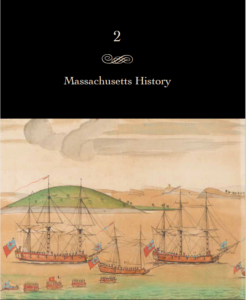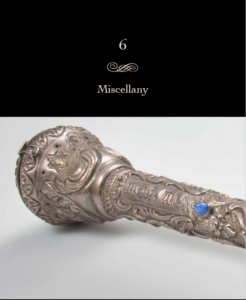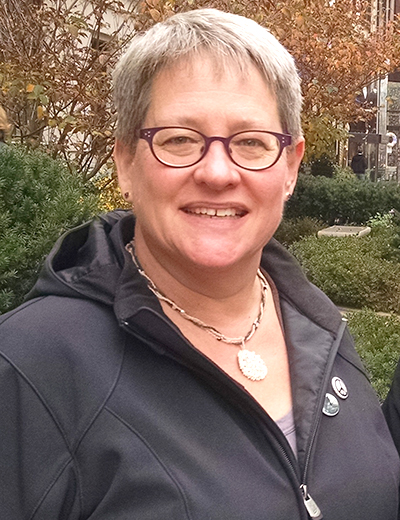 For the last few years, NEHGS Curator of Special Collections Curt DiCamillo and I have been working on a special book called Family Treasures: 175 Years of Collecting Art and Furniture at the New England Historic Genealogical Society. This lavishly illustrated volume showcases the most interesting and unique items in our collection. We contracted with Gerald W. R. Ward, American decorative arts expert and Katharine Lane Weems Senior Curator Emeritus of the Museum of Fine Arts, Boston, to write the text and hired award-winning New York City photographer Gavin Ashworth. The result is an intimate portrait of our collection’s highlights, told in engaging narrative and 123 stunning full-color images.
For the last few years, NEHGS Curator of Special Collections Curt DiCamillo and I have been working on a special book called Family Treasures: 175 Years of Collecting Art and Furniture at the New England Historic Genealogical Society. This lavishly illustrated volume showcases the most interesting and unique items in our collection. We contracted with Gerald W. R. Ward, American decorative arts expert and Katharine Lane Weems Senior Curator Emeritus of the Museum of Fine Arts, Boston, to write the text and hired award-winning New York City photographer Gavin Ashworth. The result is an intimate portrait of our collection’s highlights, told in engaging narrative and 123 stunning full-color images.
So as not to spoil the surprise when the book comes out later on this month, I thought I’d share an unorthodox preview of it with our blog readers: the view from the book’s index. Indexing is not something I dealt with very often in thirty years of textbook publishing; textbook indexes are rather sparse and utilitarian. But when I arrived at NEHGS four years ago, I realized that a comprehensive index is a crucial part of any genealogical publication. Each piece of information—names especially, but also places and even ships—is vital to family history researchers.
Once the pages of a book are final, the files are sent to our crack indexer Steve Csipke. He reads every word to build the backbone of the index, adding every name (maiden and each married name for the ladies), place, and ship, and then the page on which it occurs. Slicing and dicing the content this way illuminates any discrepancies that may have been missed in multiple rounds of proofing. Any generation confusion or inconsistencies in the spelling of first or last names are quickly exposed when Steve gets his hands on the final pages. The indexer is our last line of defense against errors in every publication.
Slicing and dicing the content this way illuminates any discrepancies that may have been missed in multiple rounds of proofing.
The Family Treasures index offers an unusual and—in my opinion, as a person who loves all books—strangely captivating way to look at the pieces featured in the book. In order to create this preview, I scanned the text of the index, looking for tangible items, i.e., nouns. What I found was at times to be expected and, at other times, surprising. Here we go...
 In the book, we talk about three medals: Society of the Cincinnati (expected), Purple Heart, and the Czech Republic’s White Lion (surprising).
In the book, we talk about three medals: Society of the Cincinnati (expected), Purple Heart, and the Czech Republic’s White Lion (surprising).
We discuss eleven schools: Belgrade’s American International, Boston Latin, Harvard Divinity, Harvard Medical, the London School of Hygiene and Tropical Medicine, Boston’s North Bennet Street School, Rhode Island School of Design, the school of Nathaniel Gould (a slightly different kind of school), Boston’s Pleasant Street or South Writing School, Mrs. Doble’s Seminary (Boston), and even a “School of Politeness” in Boston—one that visitors to our fair city would assume did not educate our drivers!
There are two foundries, that of Paul Revere and the Ames foundry in Chicopee.
I was shocked to learn we only mention three cemeteries: Arlington National, Mount Auburn in Cambridge, and Hingham’s Old Ship Burying Ground.
We refer to seven places of worship: Boston’s Emerald Street Synagogue and the Bowdoin Square Baptist, North, First, Old West, and Hollis Street Churches—all in Boston—and St. Mary’s Catholic in Lynn.
We mention the same number of libraries (I thought there’d be more): British; Folger Shakespeare; Library of Congress; Redwood Library & Athenæum in Newport; the Westerly, R.I., public library; the Boston Athenæum; and, of course, our own NEHGS library.
It makes sense that in a book about art we would discuss museums and art galleries, and we have plenty!
For institutions of higher learning, we have six: the United States Military Academy at West Point, the Royal Academy of Painting and Sculpture in Paris, Brown, Harvard, Northeastern, and Yale.
It makes sense that in a book about art we would discuss museums and art galleries, and we have plenty! Eighteen, to be exact: the Currier Museum of Art in New Hampshire; the Scottish Rite Masonic Museum in Lexington; Museum of Fine Arts, Boston; Worcester Art Museum; Museum of Art of the Rhode Island School of Design; Tomaquag Museum of Charlestown, Rhode Island; Nichols House Museum; Toledo Museum of Art; Wadsworth Atheneum Museum of Art in Hartford; Museum of the American Revolution in Philadelphia; Pilgrim Hall Museum; Virginia Museum of Fine Arts; North Carolina Museum of Art; Peabody Essex Museum in Salem; Rijksmuseum; Winterthur Museum in Delaware; the National Gallery of Art; and the Yale University Art Gallery.
The pieces covered in the book have connections to sixteen different countries: Canada (Nova Scotia), Czechoslovakia (the Czech Republic and Slovakia since 1993), England, France, India, Italy, Jamaica, Malaysia, the Netherlands, Poland, Serbia, Surinam(e), Syria, the United Kingdom (England, Scotland, and Wales), the United States, and Ukraine.
In searching for “ship” I also found multiple instances of words that bring us right back to what American Ancestors and NEHGS is all about: relationships, partnerships, friendship, ownership, leadership, membership, and, most importantly, scholarship.
And finally, seven ships have a role in the stories of these cherished items: Constitution, Imo, Mayflower, Mont-Blanc, Planter, Sea Nymph, and Squirrel. In searching for “ship” I also found multiple instances of words that bring us right back to what American Ancestors and NEHGS is all about: relationships, partnerships, friendship, ownership, leadership, membership, and, most importantly, scholarship.
We hope you will enjoy reading Family Treasures: 175 Years of Collecting Art and Furniture at the New England Historic Genealogical Society as much as we enjoyed making it.
Share this:

About Sharon Inglis
In nearly 30 years in the educational publishing industry, Sharon developed and directed the production of French, Spanish, Italian, German, social studies, science, and math textbook programs for secondary school and higher education. She is very happy to be at NEHGS and applying her editorial and project management skills to Newbury Street Press publications, theMayflower Descendant journal, and whatever else comes her way!View all posts by Sharon Inglis →